#symphyotrichum prenanthoides
Photo


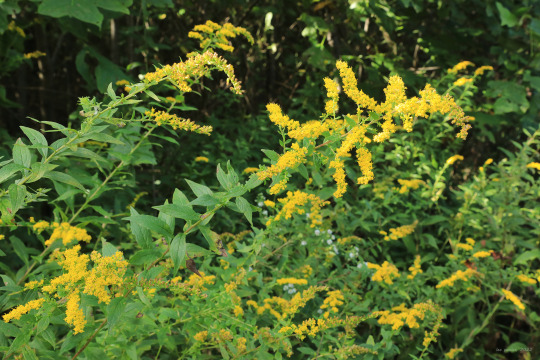
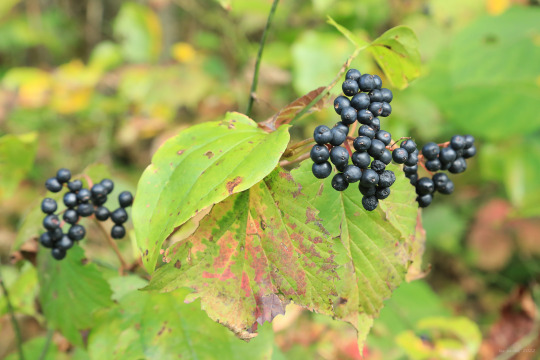
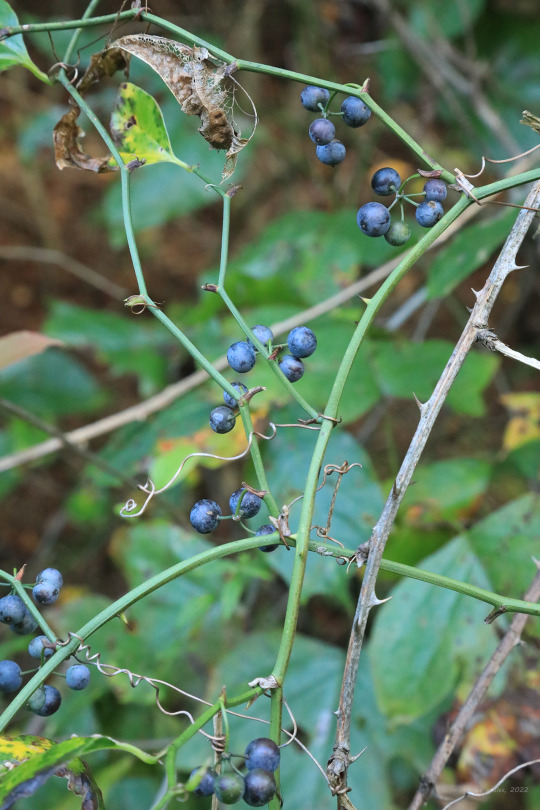


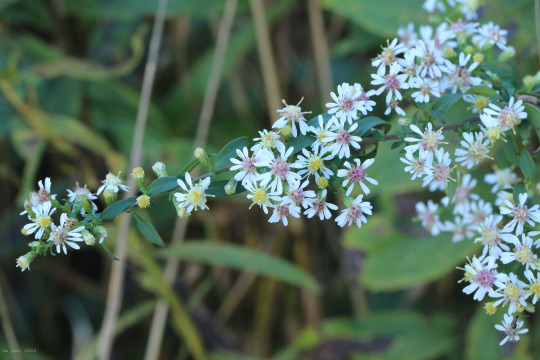

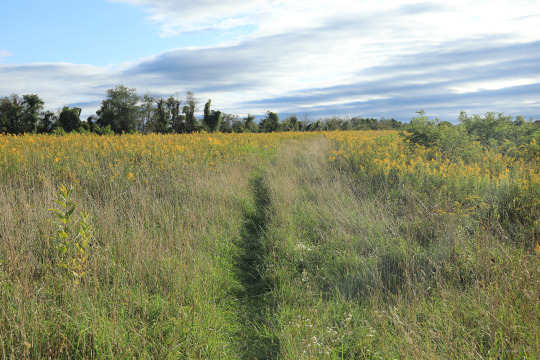
Early fall stroll through an upland meadow at Snake Hill Wildlife Management Area. The Solidago was just divine.
#appalachia#vandalia#west virginia#snake hill wildlife management area#chestnut ridge#solidago#solidago ulmifolia#elm-leaved goldenrod#elmleaf goldenrod#viburnum acerifolium#mapleleaf viburnum#smilax rotundifolia#common greenbrier#symphyotrichum prenanthoides#crooked-stemmed aster#crooked stem aster#zig-zag aster#asclepias syriaca#common milkweed#symphyotrichum lateriflorum#calico aster#symphyotrichum pilosum#frost aster
100 notes
·
View notes
Text
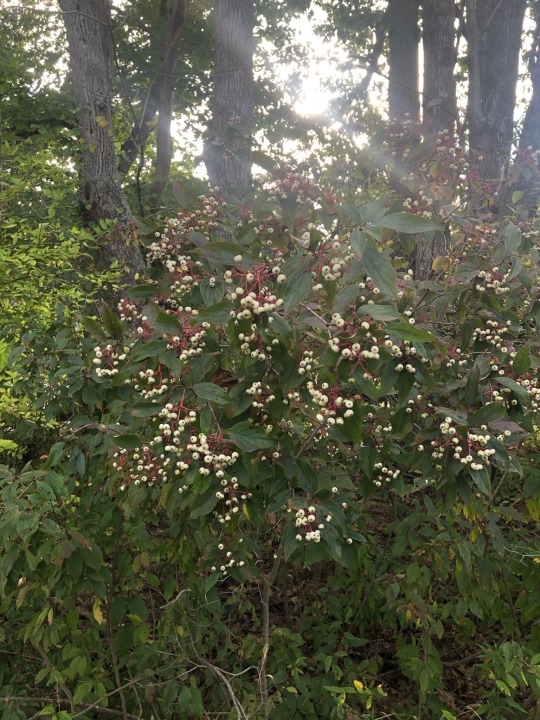


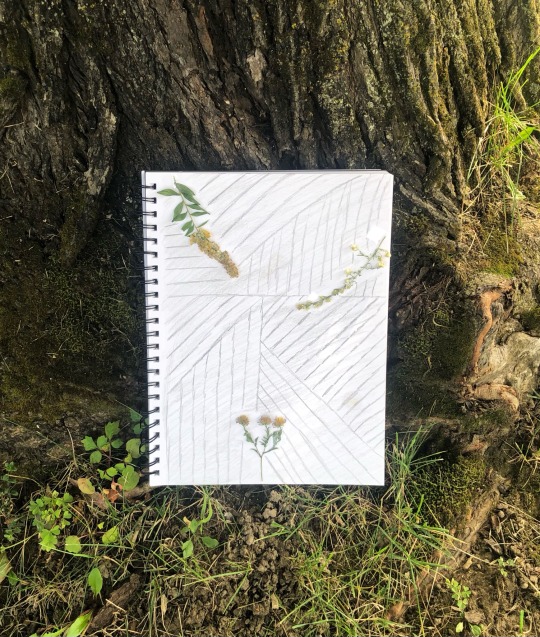
Solidago gigantea(top left): Solidago gigantea is a perennial herbaceous plant that can grow up to 5 to 8 feet in height. They typically bloom from late summer to early fall.
Hoary alyssum(top right): Hoary alyssum is considered an invasive weed in North America. One of the significant concerns with hoary alyssum is its toxicity to horses.
symphyotrichum prenanthoides(bottom middle): It is more commonly known as the crooked-stem aster. This plant generally requires minimal maintenance once established.
Attendance:
"The more pigments there are in a mixture, the less light is reflected back into our eyes, and the darker and sludgier it becomes."(Pg.39)
I selected this sentence because it actually did teach me something new. I never knew that the more pigments there are there will be less light is reflected to our eyes it is not something people would notice right away or at all.
3 notes
·
View notes
Text
Fwd: Graduate position: UOttawa.Two.ConservationGenomics
Begin forwarded message:
> From: [email protected]
> Subject: Graduate position: UOttawa.Two.ConservationGenomics
> Date: 23 December 2023 at 06:25:30 GMT
> To: [email protected]
>
>
> PhD: Conservation genomics of peripheral populations of plants
>
> The Lee-Yaw lab at the University of Ottawa is looking for a PhD student
> who is enthusiastic about conservation genomics and plants. This is a
> fully funded position that is co-supervised with Dr. Jenny McCune from
> the University of Lethbridge. The student will work alongside others
> who are establishing new populations of rare and at-risk plants in
> southern Ontario. As part of these efforts, we wish to understand a)
> how populations at the edge of the range in Ontario are related to
> more central populations in USA and b) whether populations in Ontario
> are genetically isolated from each other. One of the study systems is
> likely to be crooked-stem aster (Symphyotrichum prenanthoides) but work
> on other species is possible. Apart from these questions, the student
> will have an opportunity to develop a thesis more generally exploring
> rarity, landscape genomics, genetic constraints on range limits, or
> other questions in ecology or conservation biology.
>
> Eligibility
>
> The successful applicant will ideally have an MSc involving molecular
> lab work. Previous experience working with plant DNA and genomic data
> is preferred. Molecular work and PhD program requirements are to be
> completed at the University of Ottawa. However, the student has the
> option to spend time in the McCune lab at the University of Lethbridge
> in Alberta. Fieldwork in southern Ontario is optional during the first
> summer but data collection will take place in the lab. This position
> is open to both domestic and international students, however priority
> will be given to Canadian citizens or residents. Black and Indigenous
> students, People of Colour, and members of the LGBTQ2+ are encouraged to
> apply. The University of Ottawa is a bilingual French-English institution
> and bilingual students are very welcome.
>
> Stipend support
>
> This position is primarily funded from an NSERC Alliance grant to
> J. McCune and supplemented by funding to both PIs. Minimum stipend support
> from TAships and research grants is $30,000 per year for four years
> (this is a starting point: additional top-up is possible contingent on
> scholarships and additional grant applications). Students are strongly
> encouraged to apply for external scholarships.
>
> To apply
>
> Send an email to jleeyaw
0 notes
Photo
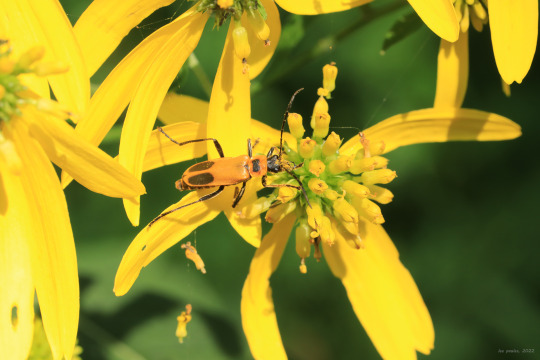
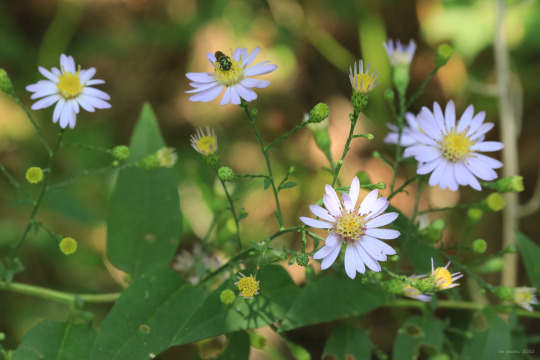

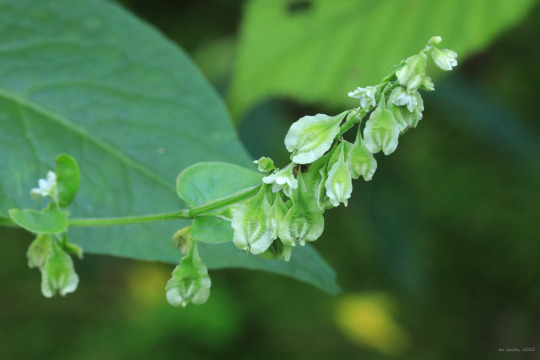

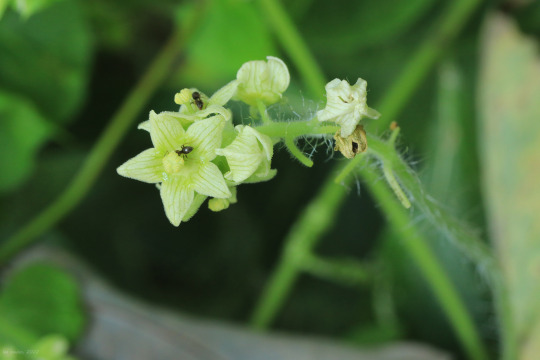




A few late summer odds and ends from a bike ride on the Mon River Trail yesterday. The asters are really starting to pop now as the days grow noticeably shorter and autumn closes in. A number of interesting vines are also in bloom and producing fruit for wildlife before the first frost. Climbing false buckwheat (Fallopia scandens) and oneseed bur cucumber (Sicyos angulatus), a member of the gourd family, are both aggressive twining vines with distinctive foliage, flowers, and fruits.
From top: a goldenrod soldier beetle strikes nectar gold on a wingstem flower (Verbesina alternifolia); Short’s aster (Symphyotrichum shortii), a really beautiful perennial often found growing in dry to mesic oak-hickory woods with limestone near the surface; climbing false buckwheat, a delicate twiner whose pendulous fruit has three ruffled sides, like pantaloons; oneseed bur cucumber, whose bristly fruit can cause painful stings; crooked-stemmed aster (Symphyotrichum prenanthoides), also known as zag-zag aster, whose stems often zig-zag between the nodes of its spatula-shaped leaves; and the glorious New England aster (Symphyotrichum novae-angliae), one of the most important pollinator plants of late summer and early autumn.
#appalachia#vandalia#west virginia#late summer#flora#wildflowers#mon river trail#verbesina alternifolia#wingstem#symphyotrichum shortii#short's aster#fallopia scandens#climbing false buckwheat#sicyos angulatus#oneseed bur cucumber#bur cucumber#symphyotrichum prenanthoides#crooked-stemmed aster#crooked-stem aster#zig-zag aster#symphyotrichum novae-angliae#new england aster
41 notes
·
View notes
Text




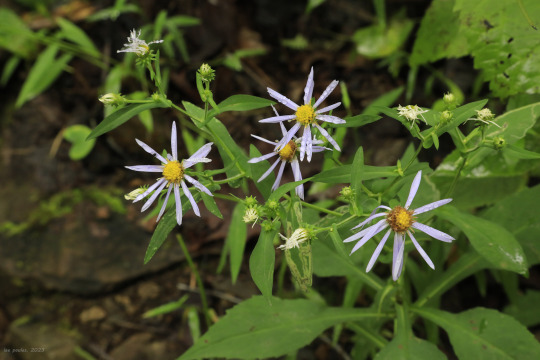
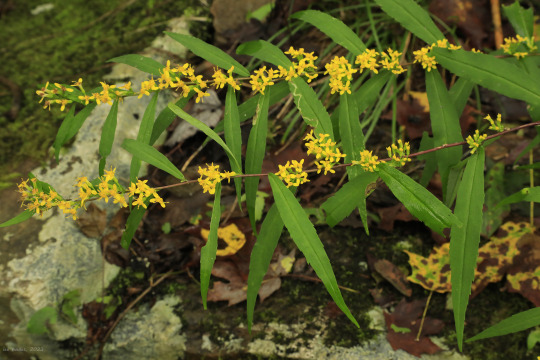
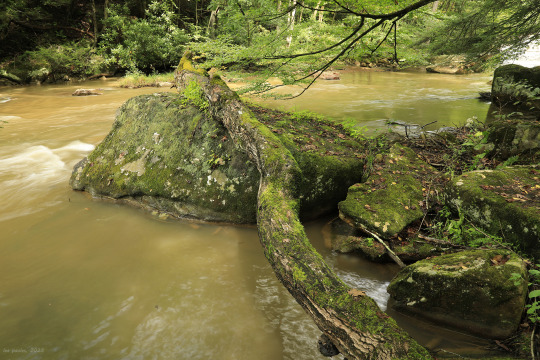
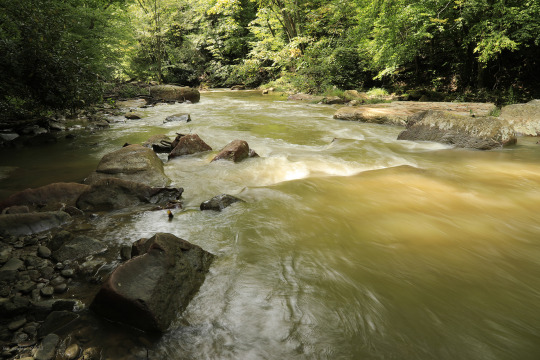
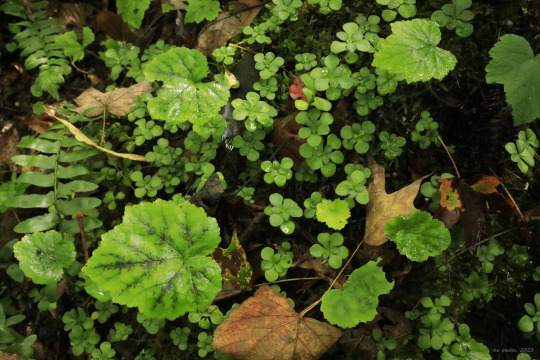

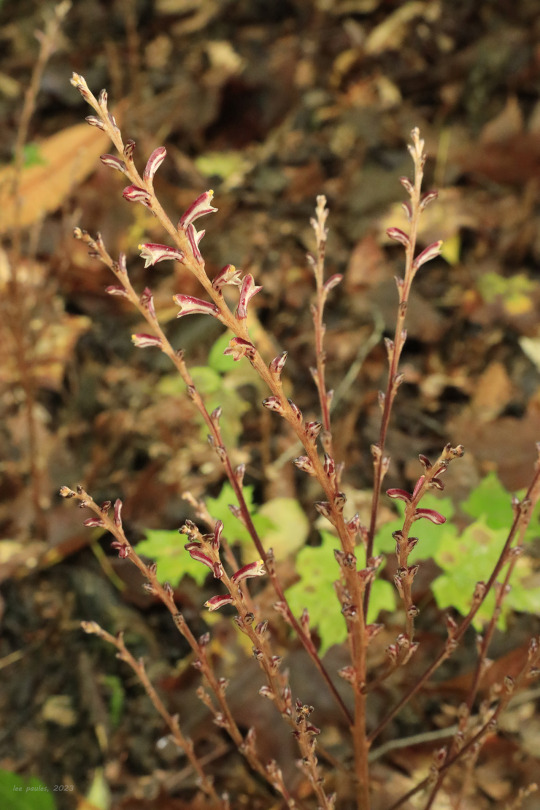
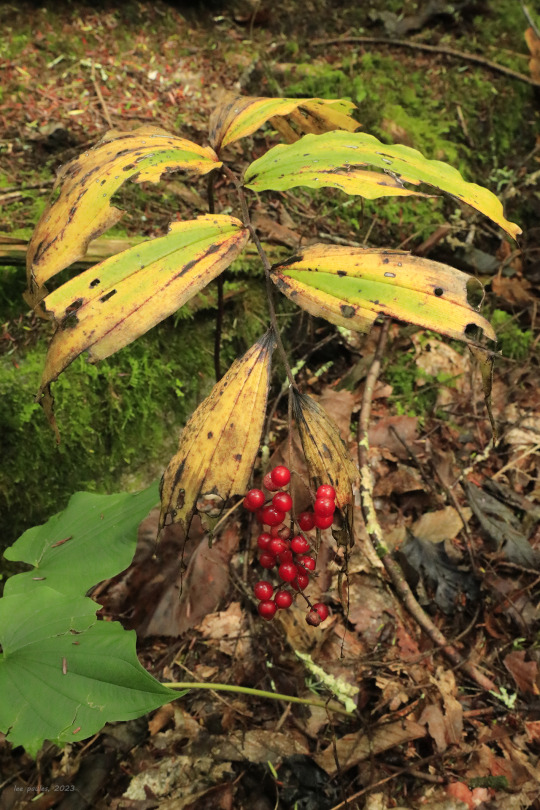
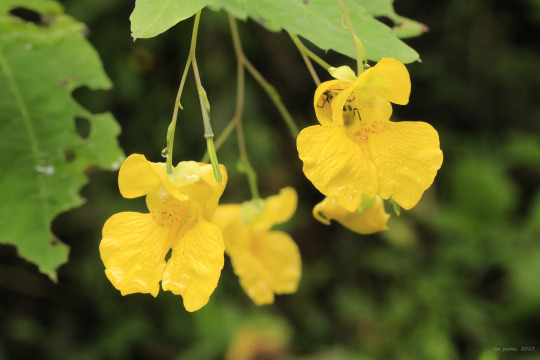
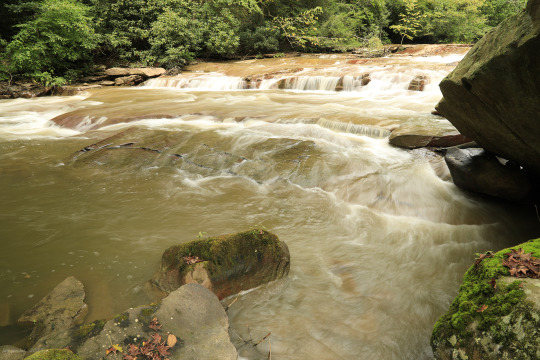

Despite its undignified name, Muddy Creek is a lovely mountain stream that normally runs fast and clear on its steep descent to Cheat River. But after a week of heavy rain in NC-WV, the stream looked a bit murky yesterday. Not even the sediment washing away from the mountains dims its beauty in my eyes. And the enchanting, moss-encrusted forest along its bank holds its own late summer treasures.
From top: great blue lobelia (Lobelia siphilitica), which pairs beautifully with cardinal flower to provide late summer color in a native wildflower garden; white wood aster (Eurybia divaricata), which is the most common of the shade-loving white asters in this area; crooked-stemmed aster (Symphyotrichum prenanthoides), also known as zigzag aster, whose clasping, spatula-shaped leaves distinguish it from big-leaf aster, another woods-loving aster with lavender flowers; blue-stemmed goldenrod (Solidago caesia), whose spreading, yellow-flowered stems provide stunning late-season color in a native wildflower garden; an intensely-green collage of moss, woodland stonecrop (Sedum ternatum), Christmas fern (Polystichum acrostichoides) and heartleaf foamflower (Tiarella cordifolia), which I am trying hard to reproduce in my own native wildflower shade garden; the shaggy-maned stem of Coker's Amanita (Amanita cokeri), one of the most impressive mushrooms of Appalachia's summer forests; beech-drops (Epifagus virginiana), a parasitic plant that grows and subsists on beach tree roots; the bright red berries of false Solomon's seal (Maianthemum racemosum); yellow jewelweed (Impatiens pallida), whose explosive seed pods give the plant its other common name, pale touch-me-not; and narrow-leaved tick-trefoil (Desmodium paniculatum), also known as panicled tick-trefoil, a late summer pea whose sticky seed pods commonly hitch rides on shoes and boots.
#appalachia#vandalia#west virginia#wildflowers#flora#summer#muddy creek#cheat river#preston county#fungi#coker's amanita#great blue lobelia#white wood aster#crooked-stemmed aster#zigzag aster#blue stemmed goldenrod#woodland stonecrop#christmas fern#heartleaf foamflower#beech-drops#beech drops#false solomon's seal#solomon's plume#yellow jewelweed#pale touch-me-not#narrow-leaved tick-trefoil#panicled tick-trefoil#falls#rapids#mountain stream
103 notes
·
View notes
Text
Fwd: Graduate position: UOttawa.Two.EvolutionaryBiol
Begin forwarded message:
> From: [email protected]
> Subject: Graduate position: UOttawa.Two.EvolutionaryBiol
> Date: 17 February 2023 at 06:33:03 GMT
> To: [email protected]
>
>
> PhD: Conservation genomics of peripheral populations of plants
>
> Ideal start date: September 2023
>
> The Lee-Yaw lab at the University of Ottawa (https://ift.tt/iCtQ5sV) is
> looking for a PhD student who is enthusiastic about conservation genomics
> and plants. This is a co-supervised position with Dr. Jenny McCune from
> the University of Lethbridge (https://ift.tt/Apdrh1v). The student
> will work alongside others who are establishing new populations of
> rare and at-risk plants in southern Ontario. As part of these efforts,
> we wish to understand a) how populations at the edge of the range in
> Ontario are related to more central populations in USA and b) whether
> populations in Ontario are genetically isolated from each other. One
> of the study systems is likely to be crooked-stem aster (Symphyotrichum
> prenanthoides) but work on other species is possible. Apart from these
> questions, the student will have an opportunity to develop a thesis more
> generally exploring rarity, landscape genomics, genetic constraints on
> range limits, or other questions in ecology or conservation biology.
>
> Eligibility:
>
> The successful applicant will ideally have an MSc involving molecular
> lab work. Previous experience working with plant DNA and genomic data
> is preferred. Molecular work and PhD program requirements are to be
> completed at the University of Ottawa. However, the student has the
> option to spend time in the McCune lab at the University of Lethbridge
> in Alberta. Fieldwork in southern Ontario is optional during the first
> summer but data collection will take place in the lab. This position is
> open to both domestic and international students. Black and Indigenous
> students, People of Colour, and members of the LGBTQ2+ are encouraged to
> apply. The University of Ottawa is a bilingual French-English institution
> and bilingual students are very welcome.
>
> Stipend support:
>
> This position is primarily funded from an NSERC Alliance grant to
> J. McCune and supplemented by funding to both PIs. Minimum stipend support
> from TAships and research grants is $23,000 CAD per year for four years
> (this is a starting point: additional top-up is possible contingent on
> scholarships and additional grant applications). Students are strongly
> encouraged to apply for external scholarships.
>
> To apply:
>
> Send an email to jleeyaw
0 notes
Photo

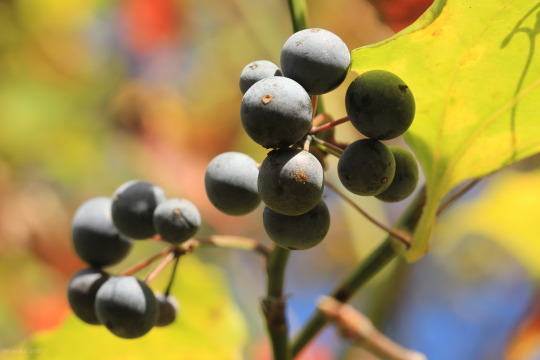
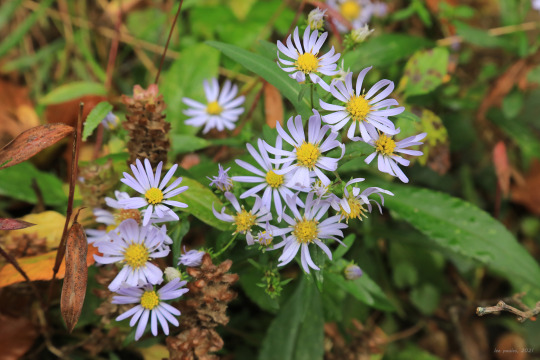

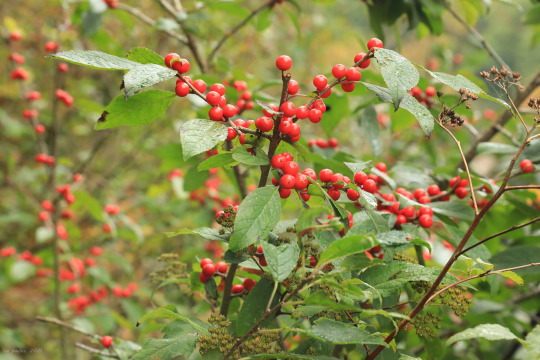



Appalachia’s Autumn Bounty, Panel 2: Nature’s final push before the killing frost of October.
#appalachia#vandalia#west virginia#flora#wildflowers#berries#fungi#autumn#fall#lindera benzoin#northern spicebush#smilax rotundifolia#common greenbrier#roundleaf greenbrier#symphyotrichum prenanthoides#crooked-stemmed aster#crooked aster#zig-zag aster#gentianella quinquefolia#stiff gentian#ilex verticillata#winterberry#vaccinium macrocarpon#large cranberry#amanita muscaria#fly agaric#symphyotrichum cordifolium#common blue wood aster
165 notes
·
View notes
Photo
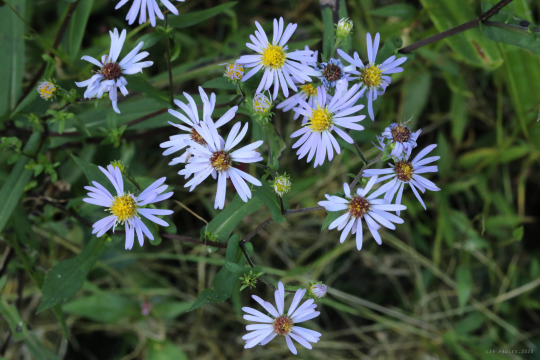

Although the proliferation of late season asters can lead to some identification challenges, crooked-stemmed aster (Symphyotrichum prenanthoides), or zig-zag aster, is fairly easy to identify by its coarsely-toothed, spatula-shaped leaves, which clasp the stem, and the tendency of its stems to zig-zag between leaf nodes. A gregarious perennial, the plant masses in showy clumps along stream and forest edges, producing graceful sprays of pale lavender flowers. Its clumping habit and attractive foliage make this aster a highly-desirable addition to a native wildflower garden, particularly for late season color. A tea made from the plant’s roots was once used by Native Americans and traditional medicine practitioners to treat fevers in babies and colds in adults. Like many of our edge-loving native wildflowers, crooked-stem aster is being driven out of its habitat by invasive species and over-browsing by deer, and is now listed as threatened in some parts of range. The photos above were taken at Prickett’s Fort State Park.
#appalachia#vandalia#west virginia#flora#fall#autumn#wildflowers#asteraceae#symphyotrichum#crooked-stemmed aster#zig-zag aster#prickett's fort state park
28 notes
·
View notes